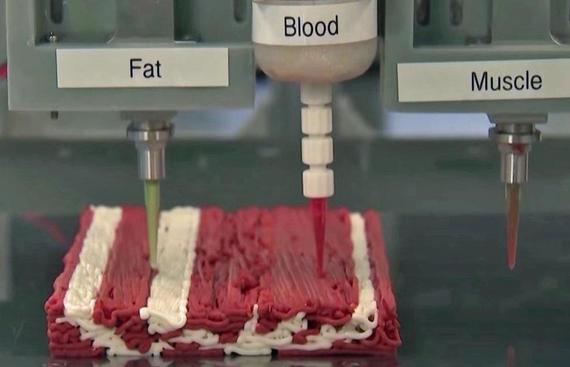An Insight on How 3D Printing is Revolutionizing the Food Industry

Businesses and Enterprises across a broad spectrum of industries ranging from Aerospace, Manufacturing, Packaging, and Automobile sectors have been actively deploying 3D printing technologies for a few decades. In recent times, there has been a tremendous breakthrough in the application of 3D Printing technology in the Food Industry. Many restaurants and Michelin star chefs have already tried their hand at 3D Food Printing in the Gourmet cooking industry. Today, 3D Food Printing is not just an idea; it is a reality that is revolutionizing the food industry.
Here's How:
In a simple layman's perspective, 3D printers are used in a process called additive manufacturing, wherein 3D printers deposit layers of a specific material, one top of the other, till the final product is created. A 3D Food Printer comprises of food-grade syringe or cartridge that holds the material, an actual food item, and deposits exact fractional layers through a food-grade nozzle directly onto a surface in a layer-by-layer additive manner.
In other words, 3D Printing Food works exactly like a regular FDM 3D printer in the sense that a material is deposited into a surface in successive layers until the desirable product is generated.
Some Innovative Applications of 3D Food Printing
Today, 3D Food Printing Technology is mostly confined to the Gourmet dining experience, mainly in the molecular kitchens and fancy bakeries. However, the usage of 3D Food Printing is not limited to Gourmet dining alone. Bakers from across the globe are making headlines for printing edible wedding cake decorations. Recently, an Isreali Firm is making plant-based meat using 3D Food Printing to mimic a real meat texture. 3D Printed Steaks made from plant protein is a great way for Vegans to get the feel and taste of real meat.
Back in 2016, two world-class chefs from London inaugurated a Restaurant named Food Ink. The idea behind Food Ink was to serve 3D printed dishes, but eventually, they went as far as having 3D printed furniture in the restaurant. Food Ink is now a traveling restaurant currently on a world tour serving 3D Printed Food.
The Benefits of 3D Food Printing
3D Printers are more affordable today for the average consumers than it used to be a few decades ago. Food Printing manufacturers are lauding 3D Food Printers' capability in terms of culinary creativity, customizability, and the food sustainability it offers. Some of the major benefits of 3D Food Printing has been listed down below:
Innovative healthy food for all:
Today, Food printing technology has gone beyond the kitchen. Chloé Rutzerveld, a Dutch food designer, for instance, used food printers to create cracker-like yeast structures that include spores and seeds that sprout over time. According to a Dutch food designer, innovations like this and other such natural and transportable products will transform the food industry in the future.
Food sustainability:
In the aspect of food sustainability, 3D Food Printing Technology is here to stay in the long run. 3D Food Printing has the potential to supply an ever-growing world population in which the traditional method of manufacturing food is not going to be enough to feed. Simultaneously, food printers could also minimize waste as they use hydrocolloid cartridges that gels well when combined with water.
Personalized nutritional meals:
Since 3D Food Printers follow digital instructions, that makes it easier for the user to create personalized food adjusting the correct percentage of nutrients required. Food printers can easily help determine the exact quantity of vitamins, carbohydrates, and fatty acids to be used as per the input, without having to shed sweat.
A Look into the Future
The worldwide 3D Food Printing Industry has grown from $ 3 billion in revenues back in 2013 to $21 billion in 2020. At present, 3D Food Printers may not be producing great tasting food or authentic, elaborate dishes; however, like any industry still in its infant stages, Food Printing Technology has the ability to achieve it. The promise of sustainable, affordable nutritional food is worth the effort and wait.
